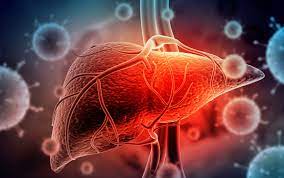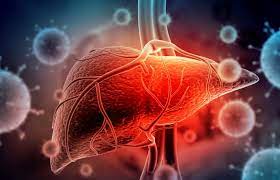
Hepatitis C
Hepatitis C is an inflammation of the liver caused by the hepatitis C virus. The bloodborne virus has the tendency to cause both acute and chronic hepatitis, ranging in severity from a mild illness to a serious, lifelong illness including fibrosis, liver cirrhosis and cancer. The incubation period for hepatitis C ranges from 2 weeks to 6 months.
Mode of Transmission
Hepatitis C is not spread through breast milk, food, water or casual contact such as hugging, kissing and sharing food or drinks with an infected person.
- Reuse or inadequate sterilization of medical equipment, especially syringes and needles in healthcare settings
- Transfusion of unscreened blood and blood products
- Injecting drug use through the sharing of injection equipment
- Tattoos and body piercings in unlicensed facilities using nonsterile instruments
- Needle stick injuries in health care settings
- Sharing razors or toothbrushes with a person who has HCV
- Can be passed from an infected mother to her baby and via sexual practices that lead to exposure to blood (for example, people with multiple sexual partners and among homosexual); however, these modes of transmission are less common
Pathophysiological Stages
- Entrance of HCV into bloodstream and liver cells eventually
- Activation of innate immunity and adaptive immunity
- Initiation of cell necrosis (of cytotoxic T cells) by activating several mechanisms including immune-mediated cytolysis in addition to various other phenomena such as hepatic steatosis, oxidative stress and insulin resistance
- Influence of proteins/peptides encoded by different sub-genomic regions of the HCV genome and their quasispecies on the above mechanism to catalyze disease causation
- Inflammation
Sign and Symptoms
Following initial infection, approximately 80% of people do not exhibit any symptoms. Those who are acutely symptomatic may exhibit;
- Fever
- Fatigue
- Decreased appetite
- Nausea
- Vomiting
- Abdominal pain
- Upset stomach
- Dark urine
- Pale/grey/clay-colored faeces
- Joint pain
- Jaundice (yellowing of skin and the whites of the eyes)
- Bleeding & bruising easily
- Itchy skin
- Ascites (fluid buildup in abdomen)
- Swelling in legs
- Weight loss
- Confusion, drowsiness and slurred speech (hepatic encephalopathy)
- Spiderlike blood vessels on skin (spider angiomas)
Causes & Risk Factors
- HCV
- A health care worker who has been exposed to infected blood, which may happen if an infected needle pierces skin
- Have ever injected or inhaled illicit drugs
- HIV (Human Immunodeficiency Virus)
- Received a piercing or tattoo in an unclean environment using unsterile equipment
- Received a blood transfusion or organ transplant before 1992
- Received clotting factor concentrates before 1987
- Received hemodialysis treatments for a long period of time
- Vertical Transmission (Were born to a woman with a hepatitis C infection)
Diagnostic Test
HCV infection is diagnosed in 2 steps:
- Testing for anti-HCV antibodies with a serological test
- If the test is positive for anti-HCV antibodies, a nucleic acid test for HCV ribonucleic acid (RNA) is needed to confirm chronic infection and the need for treatment.
Following are the tests to diagnose HCV;
- Anti-HCV antibody test
- HCV RNA quantification test
- Enzyme Immunoassay (EIA)
- Polymerase Chain Reaction (PCR)
- Transcription Mediated Amplification (TMA)
- Recombinant Immunoblot Assay (RIBA)
- Ultrasound & transient elastography
- Magnetic resonance elastography (MRE)
- Blood test
- CT scan
- Hepatic biopsy
Complications
- Cirrhosis
- Liver failure
- Liver cancer
Medical Treatment
- Interferon alfa-2a
- Interferon alfacon-1
- Peginterferon alfa-2a
- Interferon alfa-2b
- Peginterferon alfa-2b
- Ribavirin
- Interferon alfa-2a + ribavirin
- Daclatasvir (Daklinza)
- Elbasvir/grazoprevir (Zepatier)
- Glecaprevir and pibrentasvir (Mavyret)
- Ledipasvir/sofosbuvir (Harvoni)
- Ombitasvir/paritaprevir/ritonavir (Technivie)
- Ombitasvir/paritaprevir/ritonavir/dasabuvir (Viekira Pak, Viekira XR)
- Simeprevir (Olysio)
- Sofosbuvir (Sovaldi)
- Sofosbuvir/velpatasvir (Epclusa)
- Sofosbuvir/velpatasvir/voxilaprevir (Vosevi)
Prevention
Primary prevention interventions recommended by WHO include:
- Safe and appropriate use of health care injections
- Safe handling and disposal of sharps and waste
- Provision of comprehensive harm-reduction services to people who inject drugs
- Testing of donated blood for HBV and HCV (as well as HIV and syphilis)
- Training of health personnel
- Prevention of exposure to blood during sex
- Avoid alcohol
- Immunization after birth & vaccinations courses
Conclusion
Hepatitis C poses a significant health threat, characterized by potential complications, varied symptoms, treatment options, and preventive measures. Complications may include chronic liver inflammation, cirrhosis, liver failure, and hepatocellular carcinoma, underscoring the importance of early diagnosis and intervention.
Recognizing symptoms like fatigue, jaundice, abdominal pain, and loss of appetite is crucial for prompt management. While no vaccine exists, direct-acting antiviral drugs offer highly effective treatment, achieving sustained virological response and improved liver health in most cases.
Prevention focuses on screening blood donations, promoting safe injection practices, and increasing awareness among at-risk populations, particularly those who inject drugs. By advocating for expanded screening, treatment access, and comprehensive prevention strategies, we can mitigate the burden of Hepatitis C and enhance health outcomes worldwide.



